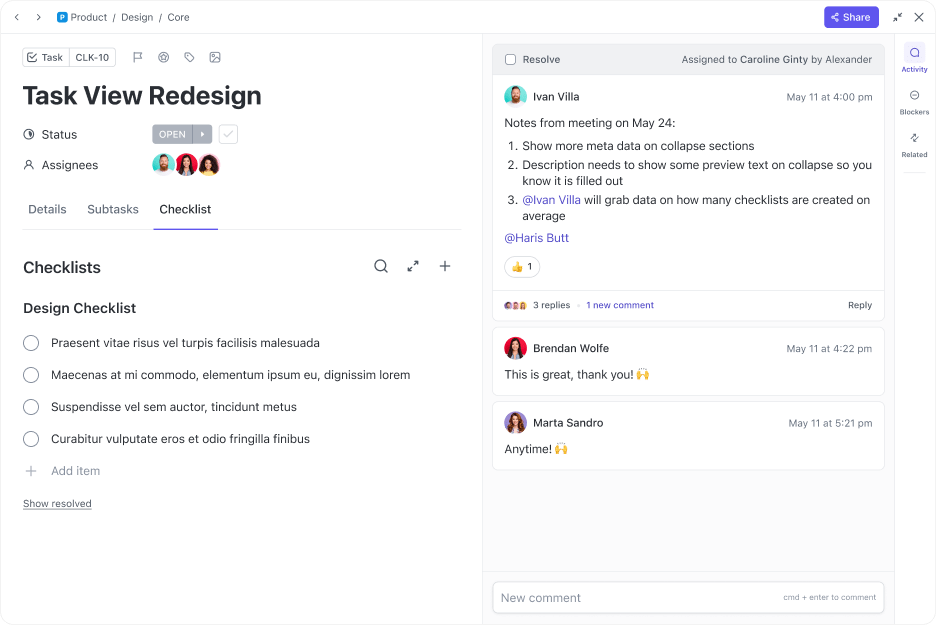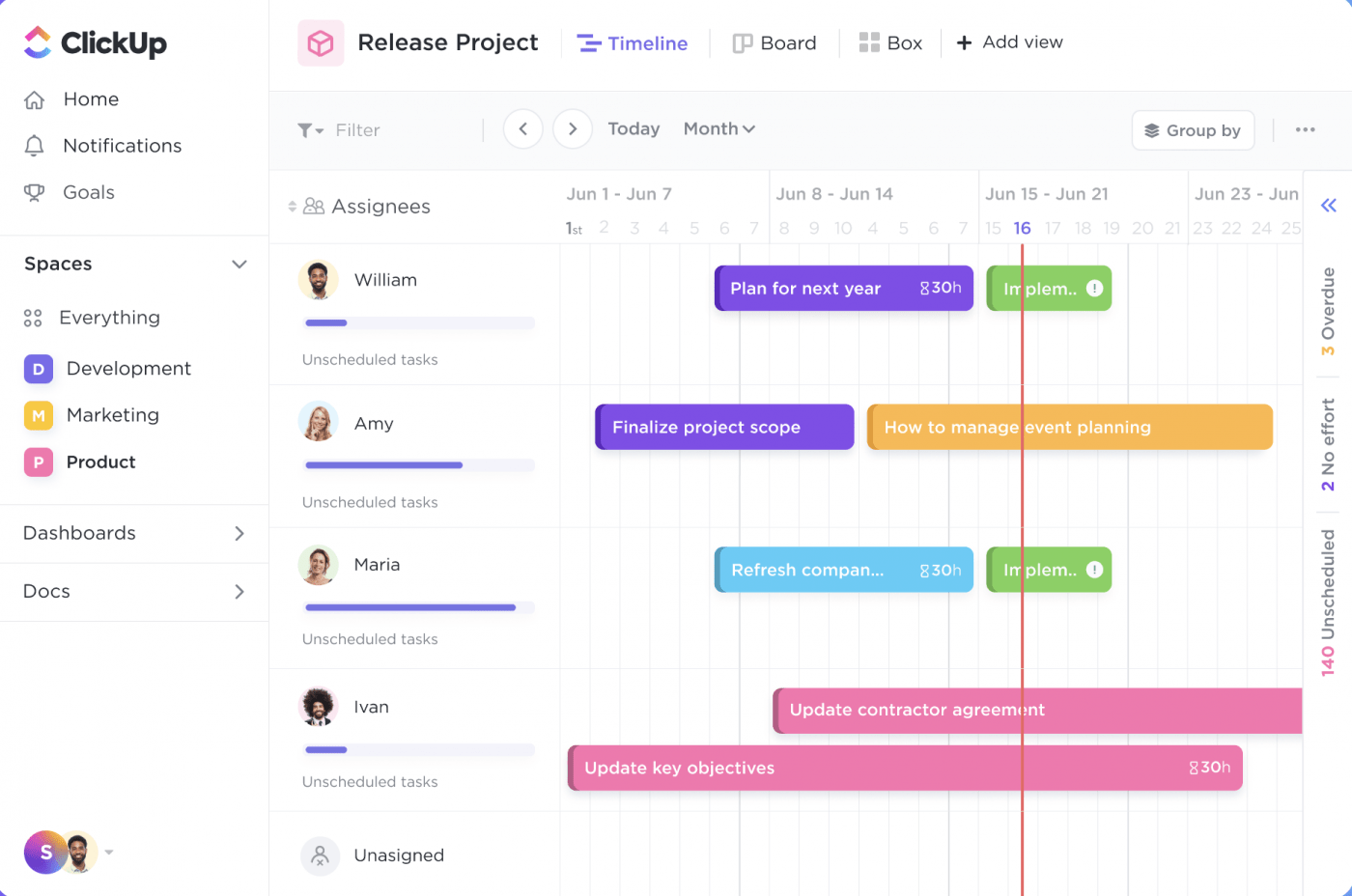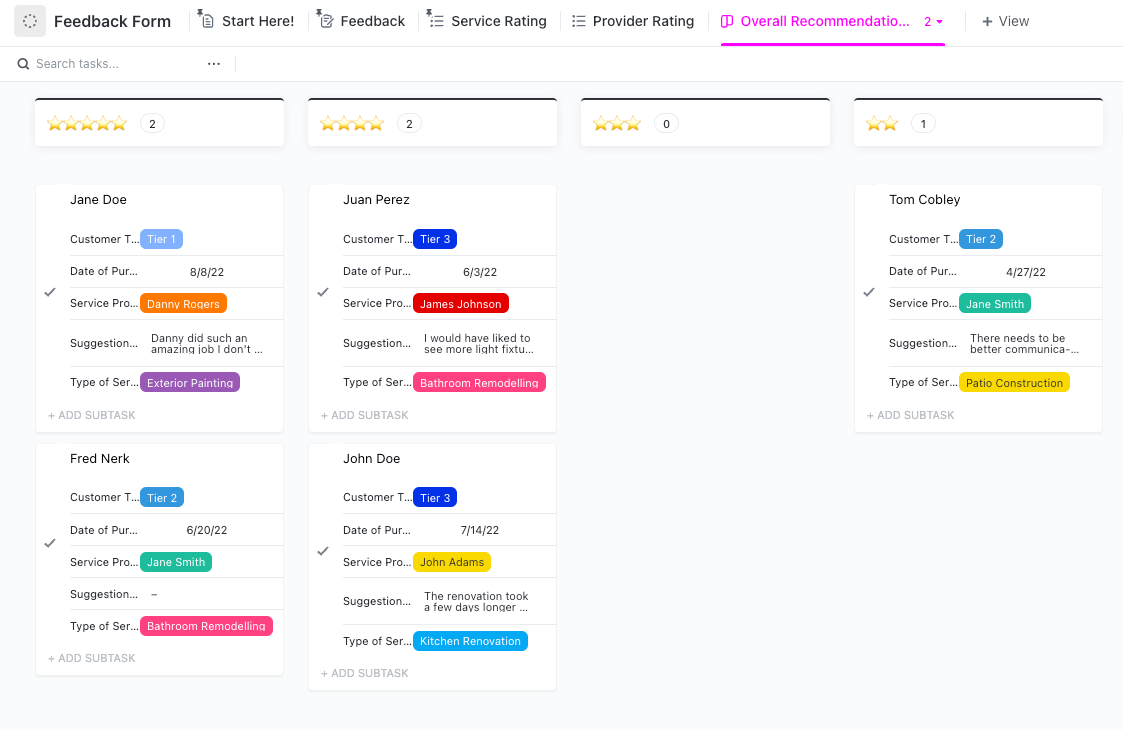Cutting-Edge Product Management Trends to Stay Ahead in 2025

Sorry, there were no results found for “”
Sorry, there were no results found for “”
Sorry, there were no results found for “”
Modern product management took shape in 1931 when Neil H. McElroy advocated for hiring at Procter & Gamble in an 800-word memo. He introduced the concept of ‘Brand Men,’ who would manage everything impacting a brand’s reputation. This evolved gradually into what we now know as product management.
Today, technology has transformed the role, with product management taking center stage in product development.
Let’s uncover the key trends, challenges, and the future of product management in 2024.
Let us look at the product management trends defining the function in 2024:
Balancing customer needs with business goals is a common challenge that data can help solve.
AI lets you swiftly handle massive amounts of data, giving detailed insights into customer behavior and market trends in a snap. It also handles repetitive tasks, allowing you to focus on more strategic work.
Sentiment analysis algorithms use machine learning (ML) to sift through social media posts, reviews, and comments, providing a detailed understanding of how people feel about your product.
Predictive analytics forecasts client behavior, helping you stay ahead of the curve by anticipating their actions and preferences.
Using ideal customer profiles, AI and ML help you create personalized experiences for each customer. They can analyze micro-patterns in user behavior to help you understand what a particular customer prefers—hyper-targeted marketing becomes easier!
And many tools help you use AI and ML in product management.
Google’s AutoML Tables and Amazon Sagemaker turn raw data into information gold mines, revolutionizing customer research. Meanwhile, tools like ClickUp use AI and ML to simplify complex tasks for growth product managers.

ClickUp Brain integrates an AI project manager to automate tasks, progress updates, and meetings. It can even automate subtasks, action items, and data filling.
Takeaway: AI/ML tools help PMs improve personalization in products and simplify complex tasks
Data-driven analytics gives a detailed look into user interactions, making you less prone to judgment errors and typical vulnerabilities in product management systems.
With platforms like Google Analytics, you can get comprehensive insights into the demographics and behaviors of users. Use these insights to guide your user engagement strategies and product positioning, gaining a more profound, data-driven understanding of user preferences.
Today’s analytics tools have advanced visualization features, allowing you to quickly spot and capitalize on market gaps and trends. You can also tailor product features more precisely to individual customer needs.

ClickUp helps you translate data into actionable insights. Set measurable project goals and metrics with ClickUp Goals, and track your progress visually with widgets to monitor KPIs. Analyze these metrics trends to identify areas for improvement and adjust your product strategy accordingly.

ClickUp Views lets you view information in formats like List, Board, Calendar, and Gantt Charts. These views enable filtering and grouping tasks based on specific criteria and generate insights into team workload, project timelines, and potential bottlenecks. This helps product managers make data-driven decisions about resource allocation, sprint planning, and task prioritization.
Takeaway: Data –> insights –> better decision-making. While this is a no-brainer, it’s about how you read and interpret your data. With more and more data available, the critical thing is how you can drown out the noise to find the right signals and act on them.
Hybrid product management, powered by collaboration tools like ClickUp, keeps teams moving forward without giving up any in-office advantages.

For hybrid teams, ClickUp Whiteboard makes real-time collaboration effortless with mind mapping, collaborative roadmap creation, and whiteboarding. ClickUp’s workload management features are also invaluable in balancing team capacity and workloads..
ClickUp Spaces makes assigning tasks, setting deadlines, and tracking progress simple and intuitive. With Spaces, you can provide clear ownership and accountability to teams, even in a hybrid setting. Team members can easily see individual and collective workloads and coordinate better on projects. Moreover, you can also define user permissions to control who can access what.

In addition, ClickUp’s integrations with other tools like Slack, Zoom, etc., create a streamlined and efficient workflow for hybrid teams.
Takeaway: Collaborative working FTW! With each passing day, we move away from the traditional notions of work. We work asynchronously, listen to our circadian rhythms, and move away from siloed processes to collective excellence. Especially in product management, the product is everyone’s job—working collaboratively means the sum of all parts has to be net positive and does not lead to decision paralysis or lead the product in a wayward direction.
Alongside cloud computing, AI, IoT, and other new technologies central to digital transformation, Agile is an essential part of the future landscape of product development.
However, this poses a challenge. Most people today view Agile primarily through the lens of software development and the tech industry. Applying agile principles to physical product development remains a separate and somewhat uncertain domain for many in the industry. In 2024 and beyond, that is about to change.
Agile best practices—frequent check-ins between departments and stakeholders, well-defined goals, autonomous and highly driven teams, and increased collaboration among departments, to name a few, are being applied to the product development pipeline through agile product development.
Ruthlessly prioritize your backlog to balance short-term wins with long-term goals. Regularly reevaluate these goals based on user insights. Continuous learning is the core of Agile and it’s also the key to unlocking product success.
ClickUp encourages product managers to adopt agile methodologies with features that streamline every stage of the process. Sprint planning becomes effortless with ClickUp’s customizable dashboards and burndown charts, which offer real-time visibility into team progress and workload.
Even prioritizing your backlog is simplified with drag-and-drop functionality and multiple list views.

With ClickUp’s Sprints feature, all aspects of sprint management are taken care of on a single screen.
ClickUp also provides product managers with collaborative ClickUp Docs for creating shareable plans, PRDs, SOPs, reports, etc. Connect them to your workflows by linking them to Tasks in ClickUp.
Boost communication within the team with real-time chat and threaded discussions. ClickUp’s extensive functionalities and its integrations with other popular tools create a centralized platform for a product manager to implement agile practices relatively quickly.
ClickUp’s New Product Development Template also helps product managers organize a structured product development plan from concept to launch. It keeps all stakeholders aligned and all tasks in one place for better tracking.
Takeaway: The technical aspects of product management have made PMs closer to engineering teams. This means speaking their language and working the way they do so that the orchestration is in sync and there’s no friction between the two functions. This goes both ways—PMs are learning agile and engineering investing ways and learning more about product management.
Cross-functional teams consist of talents from a range of departments, from operations and sales all the way to finance and logistics.
Many factors fuel this trend, including the increasing complexity of products, rapid technological advancements, and the increasing adoption of agile methodologies.
To effectively oversee product development processes, you must be equipped with an in-depth grasp of software development, design, market analysis, and project management. In short, you must know how to lead a cross-functional team.
However, a study by Harvard Business Review reveals that 75% of cross-functional teams cannot work together effectively.
For a cross-functional team to be successful, it must bring together people with different backgrounds and skill sets. Clear communication is the key to making cross-functional teams work.
Therefore, effective communication and teamwork, technical competence, market and customer research, project management, leadership, and influence are critical cross-functional skills for modern product managers.
Product managers can use ClickUp’s product management tools to improve cross-functional collaboration and communication.
For instance, with ClickUp Chat, managers and leaders can share real-time updates with team members. Teams can also use @mentions to keep each other on the same page.

Teams can also benefit from a shared and accessible knowledge base. ClickUp Docs helps in this by centralizing knowledge from everyone involved.
ClickUp Goals work on both individual and team levels. They help cross-functional teams stay on the same page. You can log the product KPIs, goals, and deadlines that need to be achieved. This can then be shared across multiple teams and departments.
ClickUp also efficiently demarcates task owners and task dependencies, allowing all stakeholders to have an eagle’ s-eye view of progress and hurdles.
Task owners are designated, enabling accountability and streamlined communication channels. Meanwhile, task dependencies allow stakeholders to understand the sequential order of tasks and identify potential bottlenecks.
Takeaway: Driving alignment and consensus is a big part of product management. Doing this requires ‘High Agency‘ — a skill often highlighted by top PMs to thrive in such a challenging role.
Emotional intelligence is about managing your and your team’s emotions at work. This, of course, demands empathy, understanding, and well-developed communication skills.
With the evolution of product management as a role, it is now all about working well with people at all levels and functions to achieve set goals. This, naturally, calls for a high degree of emotional intelligence or emotional quotient (EQ).
With a high EQ, product managers can deal better with various situations—giving feedback, motivating people, handling bias, or simply empathizing with a teammate. This also means they are more self-aware and better able to manage themselves. All this can help them be more effective in their role..
Product managers with emotional intelligence can recognize strengths and weaknesses to maximize available talent, prevent conflict, and achieve shared goals.
They can also better identify the emotional drivers behind customer behavior and tailor their product offerings.
Takeaway: Higher EQ = More effective Product Manager. Empathy is hardly a trend; the more you have, the better you’re equipped to see future landscape changes, predict how consumer preferences will change, and help you stay ahead of the curve. It is a superpower.
AI and ML are the latest drivers of technology in product management.
But remember, they are just tools to augment human capabilities. They should enable you to deliver data-driven solutions anticipating customer needs and driving product success.
Let’s explore the applications of AI and ML in more detail.
With AI-driven personalization, you can analyze user behavior to recommend the perfect product, suggest exciting content, and even personalize special offers. This means happier, more engaged customers who feel like your product is made just for them.
For instance, Recommendation Engines, such as those used by Netflix or Amazon, analyze past behavior, such as purchases and browsing history, to suggest relevant products, content, and services to consumers.
For product teams, this enhances the customer journey and increases the likelihood of conversion.
Dynamic Pricing is another exciting use. AI can adjust prices in real-time based on market conditions, customer behavior, and competitor offerings for a range of products to yield more profit.
You also use AI and ML for predictive analytics—for instance, to forecast product demand or rationalize inventory requirements.
From deploying chatbots that answer user queries in minutes to using AI for talent acquisition, there are many problems AI-powered solutions can solve.
Thanks to forecasting models and predictive analytics, you can now more accurately foresee market trends, spot new possibilities, and comprehend risks.
For instance, you can minimize platform downtime by using AI-powered anomaly detection techniques to proactively discover and address performance issues, security threats, and quality concerns.
ClickUp’s data visualization tools integrate with your predictive analytics tools to help you plan your next step.
With ClickUp Dashboards, you can set up dynamic cards that update in real time to track your workflow effortlessly. You can also set up automation to trigger notifications if a metric crosses a specified threshold. These can be used for inventory management, threat identification, or demand predictions.

While rewarding, product management as a career can be challenging. Your product team has to face many problems head-on and overcome them.
Let’s look at some of them so you are prepared for what’s to come and have the pre-requisite knowledge to deal with them:
David Grossman’s findings in ‘The Cost of Poor Communications,’ a survey encompassing 400 companies, each with 100,000 employees, revealed an average annual loss of $62.4 million per company due to insufficient communication to and among employees.
A product management initiative such as a new product launch involves members from various departments and product teams, a cross-functional amalgamation of managers, engineers, developers, UX designers, marketers, and more.
Without a proper communication channel, things can quickly become a mess. You need something to align different minds with varying roles, worldviews, and priorities into one high-functioning, actively communicating team.
ClickUp comes in here as a versatile and all-round management solution. It has a ton of features that help teams communicate and stay on the same page:

By combining all of these features, you can ensure unhindered and clear communication.
Deadlines can suck sometimes. Most mistakes happen when you are on a tight schedule and trying to finish everything on time.
As per a Project Management Institute (PMI) report in 2018, approximately 48% of projects fail to meet their scheduled completion dates.
Product roadmaps risk veering off course if a product team fails to meet deadlines. This may lead to immense external pressure.
ClickUp, once again, is the only tool you need to solve this. ClickUp’s multiple views, especially the Gantt charts and Timeline, can give you a bird’s eye view of your product development lifecycle..

The Gantt charts and Kanban cards are excellent project management tools as well. The views have customizable tags and fields you can adjust according to your business specifications. Moreover, they update in real-time so teams are always in the know.
Using these methods, you can curb your delays to a large extent and ensure there are no last-minute surprises for anybody.
It’s not always easy to update yourself on top product management trends. Here are some ways in which product managers can stay aware of the latest trends:
Keeping your customers happy is a prerequisite to business growth. After all, acquiring new SaaS customers can cost you four to five times more than retaining existing ones.
Customer centricity plays a massive role in maintaining a healthy customer base. A 5% increase in customer retention can lead to a profit boost ranging from 25% to 95%, and you are much more likely to sell to an existing customer than to a new one.
There are a few things you can do to ensure that you can provide top-notch customer satisfaction:

Ease the user feedback collection process
Your customers should be able to provide feedback quickly. In this endeavor, you can use proven and expertly crafted customer feedback forms in ClickUp.
Integrate feedback forms into your website and all other marketing channels so you can gain deeper customer insights from your consumer base.
Analyze the data obtained from customer feedback
Big data is one of the most important resources at your disposal. Unfortunately, many industries indulge in data collection but neglect data utilization
You can analyze the vast amounts of data in various ways. The secret sauce is AI. ClickUp Brain can help you generate useful insights from your data. Ask the AI Project Manager to generate summaries and takeaways from the data. This will help you mold your efforts according to your customers’ wants.
Related: A round-up of the best product marketing software today
Planning a sprint inevitably becomes a competition between stakeholders with equally urgent and vital tasks.
Navigating through this maze can upset deadlines if you can’t distinguish between what is merely urgent and what is truly important.

What steps can you take? ClickUp’s free templates help you create priority matrices. You can tap into multiple-task prioritization strategies like the Eisenhower matrix.
Order your tasks accordingly and resist all disturbances on your product development journey.
Also Read: Some of the best product management templates for you
The world of product management is changing rapidly with the progress of technology and a constantly shifting landscape. AI, low-code, no-code; you name it. This also means needing a level of preparedness for change and the intellectual flexibility to unlearn and re-learn continually.
Product management platforms like ClickUp offer rich features and applications that promote collaboration, efficiency, and data-driven decision-making. With DevOps integration and workflow automation, you can focus on what truly needs your attention.
Want to know what our product managers are working on? Here’s an overview.
Sign up to ClickUp today for free to level up your project management journey.
The three chief areas of product management include:
The 5 P’s indicate the main pillars of key focus when it comes to product management:
© 2025 ClickUp